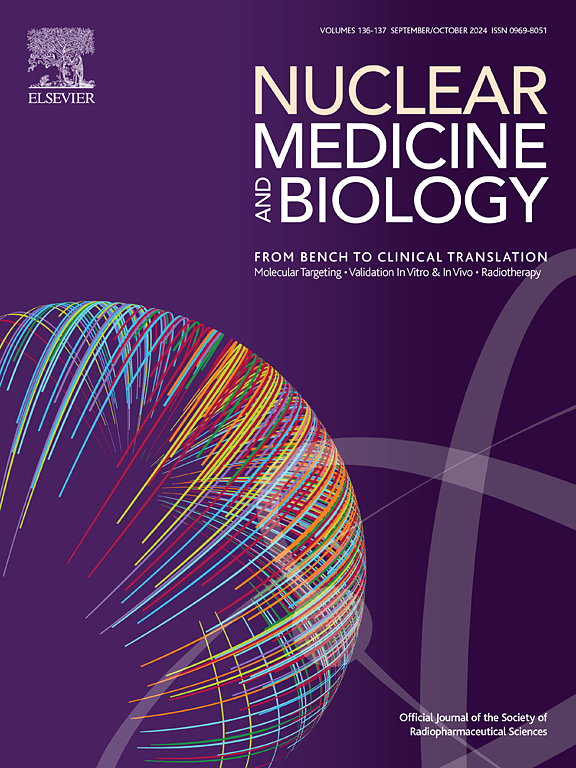How green are radiopharmaceutical sciences?
IF 3.6
4区 医学
Q1 RADIOLOGY, NUCLEAR MEDICINE & MEDICAL IMAGING
引用次数: 0
Abstract
The rapid growth of radiopharmaceutical sciences, driven by regulatory approvals of theranostic agents and the expanding role of PET imaging, underscores the need for sustainable and green practices. While radiopharmaceuticals offer high precision and targeted therapy with minimal systemic toxicity, the field faces challenges related to increasing demand, energy consumption, and waste management. The nuclear medicine market is projected to reach $30 billion by 2030, necessitating the integration of sustainability principles such as green chemistry and green engineering into radiopharmaceutical development. Given the energy-intensive nature of radiochemical processes, these principles provide strategies for reducing environmental impact. However, radiopharmaceutical sciences require adaptations to traditional sustainability frameworks due to factors like radiation safety, speed, and automation. This perspective examines the applicability of the 12 principles of green chemistry and engineering, proposing nine key principles tailored to radiopharmaceutical sciences. These principles address waste prevention, radionuclide recycling, energy efficiency, and the adoption of cleaner irradiation technologies. As the field evolves, incorporating sustainability into training programs and research initiatives will be essential.

放射性药物科学有多环保?
在监管机构批准治疗药物和PET成像作用扩大的推动下,放射性药物科学的快速发展强调了可持续和绿色实践的必要性。虽然放射性药物提供高精度和靶向治疗,且系统毒性最小,但该领域面临着与需求增加、能源消耗和废物管理相关的挑战。到2030年,核医学市场预计将达到300亿美元,因此必须将绿色化学和绿色工程等可持续性原则纳入放射性药物开发。鉴于放射化学过程的能源密集性质,这些原则提供了减少环境影响的战略。然而,由于辐射安全、速度和自动化等因素,放射性制药科学需要适应传统的可持续性框架。这一视角考察了绿色化学和工程的12条原则的适用性,提出了适合放射性制药科学的9条关键原则。这些原则涉及废物预防、放射性核素回收、能源效率和采用更清洁的辐照技术。随着该领域的发展,将可持续发展纳入培训计划和研究计划将是至关重要的。
本文章由计算机程序翻译,如有差异,请以英文原文为准。
求助全文
约1分钟内获得全文
求助全文
来源期刊

Nuclear medicine and biology
医学-核医学
CiteScore
6.00
自引率
9.70%
发文量
479
审稿时长
51 days
期刊介绍:
Nuclear Medicine and Biology publishes original research addressing all aspects of radiopharmaceutical science: synthesis, in vitro and ex vivo studies, in vivo biodistribution by dissection or imaging, radiopharmacology, radiopharmacy, and translational clinical studies of new targeted radiotracers. The importance of the target to an unmet clinical need should be the first consideration. If the synthesis of a new radiopharmaceutical is submitted without in vitro or in vivo data, then the uniqueness of the chemistry must be emphasized.
These multidisciplinary studies should validate the mechanism of localization whether the probe is based on binding to a receptor, enzyme, tumor antigen, or another well-defined target. The studies should be aimed at evaluating how the chemical and radiopharmaceutical properties affect pharmacokinetics, pharmacodynamics, or therapeutic efficacy. Ideally, the study would address the sensitivity of the probe to changes in disease or treatment, although studies validating mechanism alone are acceptable. Radiopharmacy practice, addressing the issues of preparation, automation, quality control, dispensing, and regulations applicable to qualification and administration of radiopharmaceuticals to humans, is an important aspect of the developmental process, but only if the study has a significant impact on the field.
Contributions on the subject of therapeutic radiopharmaceuticals also are appropriate provided that the specificity of labeled compound localization and therapeutic effect have been addressed.
 求助内容:
求助内容: 应助结果提醒方式:
应助结果提醒方式:


